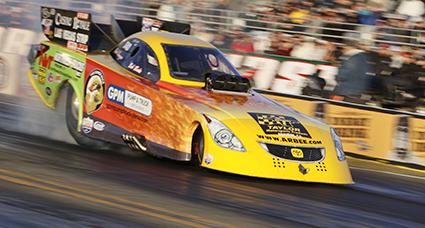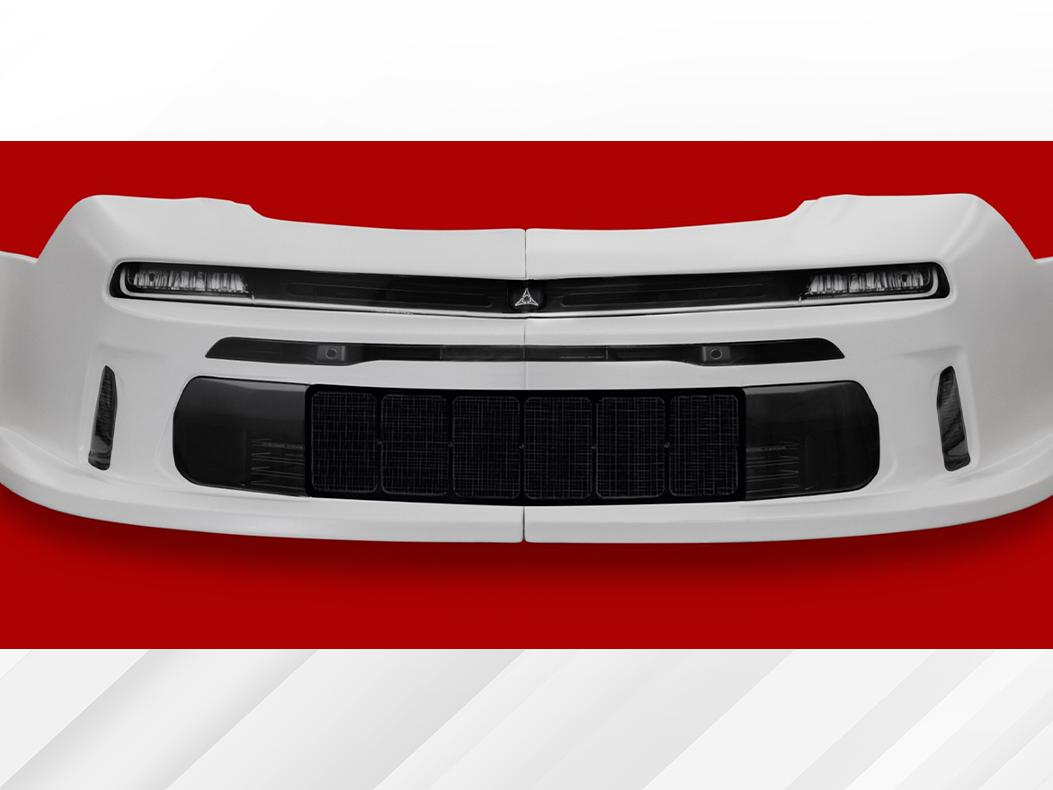Cooperative Venture Between NHRA, Funny Car Teams Leads To New Latch System
Image

Beginning at the Mopar Mile-High NHRA Nationals in Denver, July 19-21, all nitro Funny Cars competing in the NHRA Mello Yello Drag Racing Series will be required to be equipped with a new NHRA-approved dual front latching and tethering system.
The new system—which includes a much improved dual front latching system as well as a tethering system that will connect the front latching system to the firewall or driver’s compartment—is the outgrowth of a cooperative effort by the NHRA and several of the sport’s top teams and industry leaders.
The new latch is thought to be a significant improvement over the latches that were used before.
The problem of Funny Car bodies leaving the chassis by a supercharger explosion or other mechanical failure has been around as long as the class itself. A variety of measures have been implemented over the years, including supercharger and body burst panels, to relieve the pressure of a supercharger backfire in a more controlled manner. These panel designs will remain in effect and supplement the new system.
After an incident in Charlotte in April, NHRA convened a panel of experts from a number of the top Funny Car teams and other members of the industry to work together toward a better solution.
Led by NHRA Vice President-Technical Operations Glen Gray and Director of Engineering Timothy White, members of the Don Schumacher Racing, John Force Racing, Kalitta Motorsports, and Head Racing teams, along with industry experts including chassis builder Murf McKinney and renowned composite manufacturer Aerodine, worked together to design a latching and retention system to work under the demanding conditions.
The group met numerous times in person, including visits to the various teams’ fabrication departments, and participated in numerous teleconferences.
“The force behind these explosions is incredible, and what we discovered through extensive historic video reviews is that the majority of situations where the body is separating from the chassis result from the forces generated by an engine failure unlatching the front of the body from the chassis,” explained White. “The body is then caught by the onrushing wind, often at 300 or more mph. The whole idea is to prevent the body from lifting and catching that 300-mph wind. A lot of people don’t understand the forces we’re dealing with.
“The group determined that the best way to keep the body on the car begins with keeping the body’s nose latched to the chassis," White continued. "Over the years, the front latches on these Funny Cars had become a dual-purpose mechanism, serving both as latch to attach the body to the chassis as well as a fuel-tank vent, and the new system improves what was used before.”
The result of these discussions was the creation of a better dual latching system that requires both a 45-degree turn as well as an outward pull to disengage the latch, as well as a system that tethers the remainder of the body via the firewall to the front latch in case the body breaks behind the nose.
The bodies will not be tethered to the chassis, per se, but rather to the body latch, with the goal of keeping the body whole.
For more, logon to www.nhra.com.
The new system—which includes a much improved dual front latching system as well as a tethering system that will connect the front latching system to the firewall or driver’s compartment—is the outgrowth of a cooperative effort by the NHRA and several of the sport’s top teams and industry leaders.
The new latch is thought to be a significant improvement over the latches that were used before.
The problem of Funny Car bodies leaving the chassis by a supercharger explosion or other mechanical failure has been around as long as the class itself. A variety of measures have been implemented over the years, including supercharger and body burst panels, to relieve the pressure of a supercharger backfire in a more controlled manner. These panel designs will remain in effect and supplement the new system.
After an incident in Charlotte in April, NHRA convened a panel of experts from a number of the top Funny Car teams and other members of the industry to work together toward a better solution.
Led by NHRA Vice President-Technical Operations Glen Gray and Director of Engineering Timothy White, members of the Don Schumacher Racing, John Force Racing, Kalitta Motorsports, and Head Racing teams, along with industry experts including chassis builder Murf McKinney and renowned composite manufacturer Aerodine, worked together to design a latching and retention system to work under the demanding conditions.
The group met numerous times in person, including visits to the various teams’ fabrication departments, and participated in numerous teleconferences.
“The force behind these explosions is incredible, and what we discovered through extensive historic video reviews is that the majority of situations where the body is separating from the chassis result from the forces generated by an engine failure unlatching the front of the body from the chassis,” explained White. “The body is then caught by the onrushing wind, often at 300 or more mph. The whole idea is to prevent the body from lifting and catching that 300-mph wind. A lot of people don’t understand the forces we’re dealing with.
“The group determined that the best way to keep the body on the car begins with keeping the body’s nose latched to the chassis," White continued. "Over the years, the front latches on these Funny Cars had become a dual-purpose mechanism, serving both as latch to attach the body to the chassis as well as a fuel-tank vent, and the new system improves what was used before.”
The result of these discussions was the creation of a better dual latching system that requires both a 45-degree turn as well as an outward pull to disengage the latch, as well as a system that tethers the remainder of the body via the firewall to the front latch in case the body breaks behind the nose.
The bodies will not be tethered to the chassis, per se, but rather to the body latch, with the goal of keeping the body whole.
For more, logon to www.nhra.com.
 MEMBERSHIP LOGIN
MEMBERSHIP LOGIN JOIN PRI
JOIN PRI


